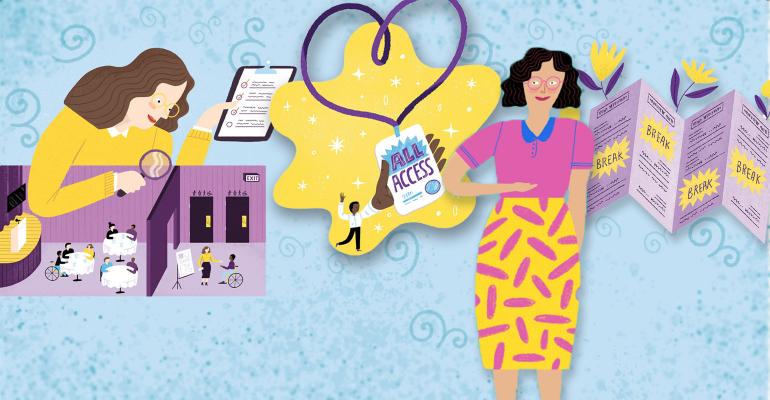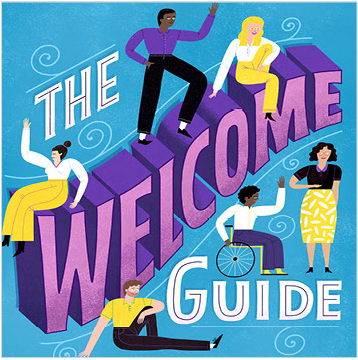VENUE SELECTION
• Ask venue management about any steps it has undertaken to be more inclusive, from having Sensory Inclusive certification (see sidebar) to signing pledges to support LGBT+ attendees and having anti-harassment measures.
• Always do a site visit even if you have booked the property in the past. Consider the impact of renovations, changes to the surrounding area, and new management. If possible, do a site visit with someone from a local disability organization who will notice things you might not.
• Discuss whether the venue will work with you on your inclusion efforts. For instance, will they support gender-neutral bathrooms for your event?
REGISTRATION AND MARKETING
• Include a diversity statement on all your materials, (see examples in Does Your Meeting Have an Inclusivity Statement?) and mention in marketing materials the practical accommodations you’ve made.
• Ask registrants to complete a questionnaire on what they need to fully participate in your event. (See 5 Need-to-Know Questions for Your Registration Site)
• If you print brochures and educational materials in languages other than English, print them in braille as well.
• Check that your registration site and mobile app are digitally accessible. For example, make them screen-reader accessible for the visually impaired and add closed captioning on videos for attendees with hearing impairment.
CONTRACTS
• Consider expanding your contract language: Can you cancel if the destination passes legislation that is unfair and unwelcoming to some of your attendees?
DESTINATION SELECTION
• If your destination does pass unwelcoming legislation and you can’t cancel, consider mitigation tactics. For example, using suppliers from the LGBT Meeting Professionals Association list.
EVENT DESIGN
• Resist the urge to overschedule. Attendees won’t learn if they are exhausted—and many of them could find it hard to run from session to session, whether they have a recognized disability or not.
• Consider sound levels and lighting choices for stage presentations. These could be off-putting for attendees with post-traumatic stress disorder and other sensitivities to loud noises and flashing lights. If any content could be disturbing to people with sensory issues, provide a warning beforehand.
• Design signage for everyone. For example, post information on wheelchair routes to sessions, which direction is east for Muslim attendees, and the ingredients for all meal and snack options for attendees with dietary restrictions and allergies.
• Consider integrating attendees with mobility issues into the event, rather than in special wheelchair rows. There are diagrams for accommodating wheelchairs throughout an audience in the downloadable ADA Checklist for Existing Facilities.
• If possible, choose activities that give attendees a new perspective. (Read Seeing in a Different Light.)
• Schedule networking events for different groups at the beginning of your conference, so that attendees can make contacts and feel comfortable for the rest of the event.
• If you provide simultaneous translation in languages other than English, include American Sign Language.
• Live captioning for key speeches can be useful for many attendees, including those for whom English is a second language and people with some hearing loss but who don’t consider themselves disabled.
• Create private spaces at your event for nursing mothers who need to pump and attendees who may need to take medication at specific times. A sensory-inclusive environment should have quiet rooms for people to take a break from crowds and noise.
POST-EVENT SURVEYS
• Ask about diversity and inclusion in your post-event survey so that you can improve for your next event. Ask, for instance, if attendees were aware of networking events for their particular community, and whether facility and organizers provided promised support.
THE SIMPLEST WAY TO PROMOTE INCLUSION
• Smile!






